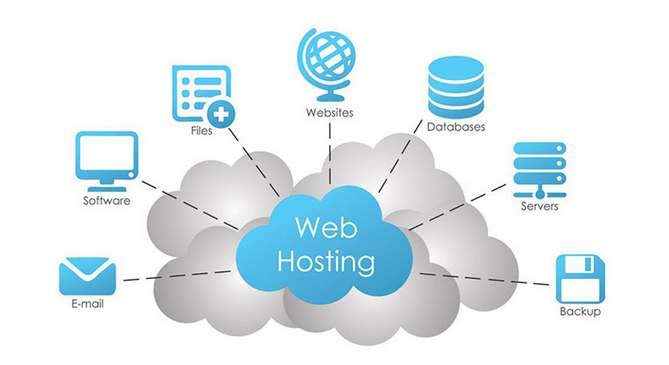Creating a standout dental website is crucial in today’s digital landscape. Your online presence serves as the first impression for potential patients. With so many options available, how do you ensure your practice shines? The right design elements can transform an ordinary site into a powerful tool for attracting and retaining clients. Dental Website Design is known to be crucial for growing your practice. If you do not know how to do it, hiring an expert is essential. From easy navigation to eye-catching aesthetics, each detail plays a vital role. Let’s dive into the essential components that will help craft an inviting and effective dental website. Whether you’re starting from scratch or looking to revamp your current site, these tips will guide you toward creating a smile online that reflects the care and professionalism of your practice.
User-Friendly Navigation
 User-friendly navigation is the backbone of any effective dental website. Visitors should easily find what they need without frustration or confusion. Clear menus, logical layouts, and intuitive pathways lead potential patients to essential information. Consider organizing your site into categories like services, patient resources, and contact details. This structure helps users locate relevant content quickly.
User-friendly navigation is the backbone of any effective dental website. Visitors should easily find what they need without frustration or confusion. Clear menus, logical layouts, and intuitive pathways lead potential patients to essential information. Consider organizing your site into categories like services, patient resources, and contact details. This structure helps users locate relevant content quickly.
Use concise labels for menu items—simple wording goes a long way in enhancing clarity. Incorporating a search bar can also help those who prefer specific queries over browsing through multiple pages.
Responsive Design
Responsive design is crucial for any dental website. With most users accessing sites through mobile devices, a flexible layout ensures that your content adapts seamlessly to different screen sizes. Imagine someone searching for a dentist on their phone while on the go. If your site doesn’t look good or function well on their device, they will likely leave and find one that does. A responsive design enhances user experience, allowing visitors to navigate easily without zooming in or scrolling awkwardly. This functionality builds trust and encourages potential patients to explore more of what you offer. Moreover, search engines like Google favor mobile-friendly websites in their rankings.
Professional Aesthetics
A dental website should reflect professionalism and trustworthiness. The design elements you choose play a significant role in establishing this image. Start with a clean layout that avoids clutter. A well-organized site makes it easier for visitors to find information quickly. Color schemes are crucial too. Soft, calming colors can evoke feelings of comfort while still maintaining an air of authority. High-quality images contribute to the overall aesthetics.
Call-to-Action (CTA) Buttons
Call-to-action buttons are crucial for any dental website. They guide visitors toward taking specific actions, like booking an appointment or requesting more information. A well-designed CTA stands out. Use contrasting colors to ensure they capture attention immediately. The text should be clear and concise, prompting users with phrases like “Schedule Your Visit” or “Get a Free Consultation.” Placement matters too. Position your CTAs prominently on the homepage, service pages, and even blog posts.
Creating a compelling dental website goes beyond aesthetics. It’s about crafting an experience that resonates with visitors and encourages them to take action. A user-friendly navigation system ensures that potential patients can easily find what they’re looking for without frustration. Meanwhile, responsive design guarantees accessibility across all devices, making it easier for users to engage with your content. Investing time and resources into these essential elements can significantly enhance your online presence and patient engagement. By focusing on usability, responsiveness, aesthetics, and clear calls to action, you’ll create a digital smile that mirrors the confidence you instill in every patient who walks through your door.…



 It is essential to be sure of how much support you will need from your company. Many companies offer the primary customer service which includes, phone, ticket and email support. Some companies provide 24/7 phone support while this is not the case with others. The only downside of the customer care services is that your questions will be answered by the vendor on duty and not the systems manager. If you want your system to be managed by other people entirely, ensure that the website is configured correctly to your load, security issues are well checked, and backups among other services are well managed.
It is essential to be sure of how much support you will need from your company. Many companies offer the primary customer service which includes, phone, ticket and email support. Some companies provide 24/7 phone support while this is not the case with others. The only downside of the customer care services is that your questions will be answered by the vendor on duty and not the systems manager. If you want your system to be managed by other people entirely, ensure that the website is configured correctly to your load, security issues are well checked, and backups among other services are well managed. If you did not know, there are different types of servers. The cheapest hosting uses one server to run many websites. A shared server is limited in many ways, and the performance of your site depends on loads of other websites.
If you did not know, there are different types of servers. The cheapest hosting uses one server to run many websites. A shared server is limited in many ways, and the performance of your site depends on loads of other websites.